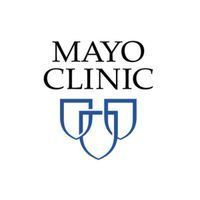
NeuroVoices: Sean Pittock, MD, on How Ravulizumab’s Effectiveness Speaks to Progress in NMOSD

The director of the Mayo Clinic Center for Multiple Sclerosis and Autoimmune Neurology provided perspective on a phase 3 study of patients with NMOSD in which no relapses were recorded while on ravulizumab.
Since the discovery of the aquaporin-4 (AQP4) water channel, drug development for neuromyelitis optica spectrum disorder (NMOSD), an autoimmune disorder, has boomed, with the first approvals happening a few years ago. Ravulizumab (Ultomiris; AstraZeneca), is a long-acting C5 compliment inhibitor that was previously approved for paroxysmal nocturnal hemoglobinuria and myasthenia gravis. With a longer half-life than eculizumab (Soliris; Alexion), the first approved therapy for NMOSD, the agent has promise as a potential disease-modifying therapy.
Ravulizumab’s efficacy and safety was tested and validated in the phase 3 CHAMPION-NMOSD study (NCT04201262), a global, open-label trial. After a median follow-up of 73.5 weeks, no patients on ravulizumab had adjudicated relapses vs 20 for patients on an external placebo arm (relapse risk reduction, 98.6%; P <.0001). The annualized relapse rate was 0.00 with ravulizumab, which was superior to the predefined comparator ARR (0.25; P <.001). Additionally, fewer patients experienced clinically important Hauser Ambulation Index (HAI) score worsening with ravulizumab (3.4%) than placebo (23.4%; P = .023)(OR, 0.16; 95% CI, 0.03-0.77).
These data, although previously presented, were reintroduced at the
NeurologyLive®: How significant is it that this trial showed no relapses?
Sean Pittock, MD: It is significant because we know that clinical attacks in NMOSD can be debilitating for patients. Obviously, in a trial setting, oftentimes we're watching patients like a hawk. Even if a patient is in the placebo arm, for example, they're going to be identified very early and get rapid treatment. The impact of relapse in a trial setting may be different to the impact of a relapsing or real life setting, but the potential of having essentially a complete cessation of clinical relapses in this disease is significant.
The other point to make is that there are other FDA-approved medications for this disease and those medications have their strengths. Inebilizumab is a drug that has a very attractive profile in that it’s given every six months, which patients like. It also had a very impressive efficacy, around an 85% risk reduction. That benefit also persists out over the longer term for patients. For patients that are on that drug, the likelihood of relapse actually tends to go down.
There's also satralizumab, which is an IL-6 receptor inhibitor. That [medication] was shown in 2, phase 3 trials to have about a 75% risk reduction, with a good safety profile. Patients have options, which is great. Surprisingly, even though we do have 3 FDA-approved drugs, a lot of the patients in the US are not being started on these medications. We need to better understand why that is. Obviously, there's quite an expense to these drugs. Generally, in my experience, insurance will cover these medications in the US, but when we look at this global impact of this disease, and with the knowledge that patients in developing countries tend to be more likely to be affected with these diseases, we have a bit of a problem. We now have great treatments, but we have a problem with access.
Are conversations in the NMOSD field shifting towards treating neurodegeneration?
The central question is, if we stop the attacks, is that the end of it? Can we pack our bags and go home? Or could there be something going on under the surface that we haven't recognized? I suspect the answer to that question is, yes. We've been so focused on the relapses because they were so dramatic and we know that they contributed to disability, so now's the time to start looking to see if patients do develop any disability or any problems over the longer term when not having relapses.
Looking at the open label extensions of NMOSD trials, outcomes that have been looked at and measured are things like EDSS, Hauser Ambulatory Index. What we've noticed is that these tend to stay very stable, and the patients don't seem to be worsening. But remember, these are crude tools, and they potentially could miss things. There was data recently published by Claudia Luccinetti, MD, of Mayo Clinic, looking at the neuropathology and the immunopathology of NMO, both autopsies and biopsies, and brain tissue. It's interesting, if you look in detail at that paper, you'll see that there is the concept of and some evidence of complement independent injury to astrocytes.
The concept of a global astrocytopathy has been raised, and so, the question would be, how would a patient present if they had a global astrocytopathy? Perhaps you're stopping the attack itself, but maybe there is some ongoing irritation of the astrocyte. And so, I think it's time to start looking at things like depression and mood to get a good sense of whether these are issues for patients with NMO and try to address that very question about whether or not there's some other process of injury that's occurring that we also need to think about.
Can we ultimately end up preventing NMOSD?
That's a good question. The central question is, how can we identify patients before they develop the disease? And that's difficult. The second issue is at the point of diagnosis, can we actually switch the disease off so patients don't need long term maintenance immunotherapy for the rest of their lives? The whole area of tolerization has risen. There's great interest in the NMO community on the possibility of tolerating. There's some really important, great data coming out about the concept of both central and peripheral checkpoint inhibitor dysfunction, and the fact that patients may be kind of already set up from an immunological perspective to develop this disease.
Before we make those jumps, we need to think about early diagnosis. One of the problems is not just the lack of access to drugs, but there's also a lack of access to testing. My concern is that a lot of patients that should be tested are not being tested. Firstly, we need to think about how to provide access to testing so that patients can get the right diagnosis, and then figure out how we're going to help those patients. If they don't have access to these FDA-approved drugs, then what are the options? There are cheaper options for patients. For example, rituximab, seems to work quite well. It’s off-label, it's a cheaper option, and it's a good option for a patient. But it's no good to a patient if you haven't made the diagnosis. Above all, we've got to help physicians recognize that this is an important disease, and there's a biomarker that has essentially a 100% positive predictive value. We don't have to worry about false positive tests if you use the right assay. You can then make that diagnosis earlier. At least if you don't have access to these very good, phase 3 trial proven drugs, get them on something to really reduce the likelihood of disability.
Transcript edited for clarity.
Newsletter
Keep your finger on the pulse of neurology—subscribe to NeurologyLive for expert interviews, new data, and breakthrough treatment updates.


































